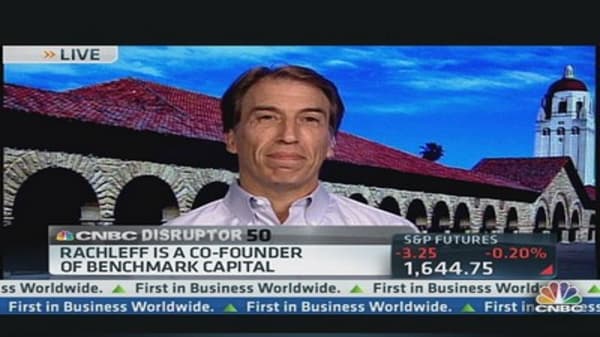Regulation Favors the Incumbents
The typical way for a start-up to establish trust with its clients is through customer testimonials. Unfortunately, the Securities and Exchange Commission specifically forbids investment advisors from publishing testimonials, facilitating testimonials or linking to sites that might have testimonials. The SEC therefore unintentionally affords incumbents with well-known brands an enormous advantage.
It's Hard to Innovate on a 30-Year-Old Infrastructure
The structure of the financial industry is such that most start-ups have to work with the incumbents to deliver services. Unfortunately, the incumbents' technology is incredibly antiquated.
For example, financial advisors must custody their clients' assets at independent brokerage firms. For a start-up to deliver an investment management service at a radically lower cost or radically lower account minimum, the start-up needs to automate the entire process of opening, funding and trading a brokerage account. To deliver this automation, a start-up needs its brokerage partner to provide application programming interfaces (APIs) that enable computers to do all the work.
The vast majority of brokerage firms don't support modern interfaces at all. For the ones that do, their computer infrastructures are often 30 years old. In some cases, you even need to write your software in COBOL.
I'm not sure if COBOL has been taught in college for more than 25 years! Very few companies have used these brokerage APIs, and as a result, they are often incomplete or error-prone. It hasn't been worthwhile for incumbents to update their architectures if the only companies likely to demand the APIs were a few small start-ups.
In short, you need to be big enough for the incumbents to want to partner with you—but you can't get big enough without their partnerships.
Lawyers Inhibit Innovation
Brokerage firms are dominated by their compliance departments. The lawyers who staff the departments are obsessed with avoiding risk. That is not a good dynamic for disruption. In many cases, compliance officers are given veto power over business decisions. That's the opposite of how we view things in Silicon Valley, where we employ lawyers to find creative ways to come up with solutions to make innovation possible, not stifle it.
(Watch: Wealthfront Disrupts Traditional Brokerage Model)
Compliance is also at odds with convenience, one of the core requirements of disruption—but lawyers at the big firms are reluctant to take a risk to help start-ups, because they aren't big or important enough.
Health Care and Education Are Like Financial Services
Health care and education start-ups face many of the same challenges as their brethren in financial services. They too need to overcome trust issues, antiquated technology and risk-averse partners to achieve scale. Once you have scale, a financial service business can be insanely profitable—and I think the same is true in health care and education. A friend once told me the pharmaceutical business is the worst business in the world until you get regulatory approval to sell your product. Then it becomes the best business in the world; in other words, when you can scale.
(Watch: Health Care Industry Game Changers)
How do you get scale if incumbents won't work with you? At Wealthfront (the software-based financial advisor I run), we used the lessons from Crossing the Chasm to succeed. We narrowly focused on young people who work in the technology business. We gained credibility based on the people involved with our company and our tremendous momentum. Our outsized presence in an important market persuaded potential partners to work with us. We never would have succeeded had we started with a broad market.
Our other challenges have significantly lessened as we've begun to achieve scale. The more stature we get, the more incumbents want to work with us. It's funny that once you get past the chicken or egg problem, you build an incredibly positive momentum machine.
If you want to disrupt in one of the three holdouts, you need a creative solution to overcome the inherent biases of the partners with whom you want to work. Find a way to be important before becoming big.
Andy Rachleff is the president and CEO of online financial advisory firm Wealthfront, and a member of the faculty at Stanford Graduate School of Business, where he teaches courses on technology entrepreneurship. Andy was formerly general partner and co-founder at Benchmark Capital. Wealthfront recently passed the $250 million milestone in assets under management.




